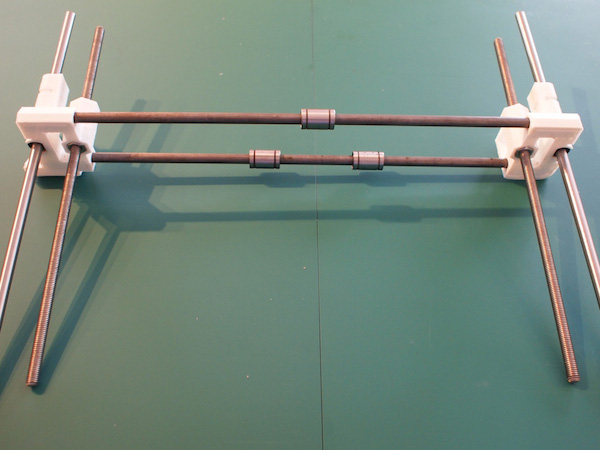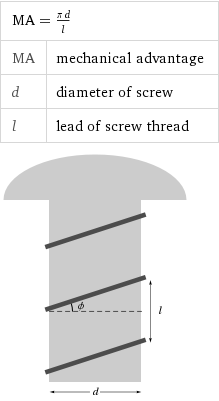Physics page 1
One of the main concerns of 3d printer designers is the accuracy of the printer. The printer must be able to move as smoothly and as accurately as possible to make a clean, good looking representation of the digital object. The way this is achieved most often is to slow down the stepper motors, but this is not enough. They must spread the motion out into smaller increments. In the case of the z axis, this is achieved by the use of one of classic simple machines: the screw.

http://www.nextdayreprap.co.uk/images/nextday3dprinters/Reprap_Prusa_Mendel_Build_Manual/600_450_Reprap_Prusa_XZ_Axis_Step_05.jpg
Shown above is the z axis component of a popular extrustion 3d printer that goes by the name of "Reprap". The four legs are the z component screws. The threaded rods are 400mm long, have a 8mm diameter, and a pitch of 2mm. A nut is attached to each rod to raise and lower the extruding head as a stepper motor spins the rods. The "Reprap" extrudes layers that are 0.05 cm thick so it must move up that distance after each layer is complete.
 The mechanical advantage can
not only tell us how much force can be exerted by the
use of this simple machine, but also the ratio of the
length of input motion to the length of the output.
The mechanical advantage can
not only tell us how much force can be exerted by the
use of this simple machine, but also the ratio of the
length of input motion to the length of the output.
(pi)(0.8cm) aka. (the input
distance)
______________________________________________________________________________________________________________________________________
(0.2cm) aka. (the output distance)
is approximately equal to
12.7
______________________________________________________________________________________________________________________________________
(0.2cm) aka. (the output distance)
is approximately equal to
12.7
So for every
revolution of the threaded rod, the extrusion head
moves 1/12.7 of that length which is:
(pi)(0.8cm)
approximately
2.5cm
approximately
2.5cm
Every revolution or
2.5cm the stepper motor moves translates http://iqa.evergreenps.org/science/phy_science/ma.html
to 0.2 cm
in vertical distance. Looks familiar? Good,
that means our math works. So how many
revolutions should the
stepper motor move to raise the extruding head to the next layer?
stepper motor move to raise the extruding head to the next layer?

